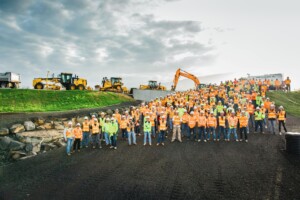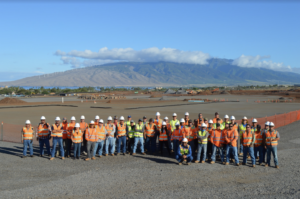Historic Hawai‘i Foundation is pleased to recognize the thirteen kama‘āina companies, organizations and landmarks that have reached the 100-year mark in 2021. We applaud their lasting success and contributions to the cultural heritage of the Hawaiian Islands over the past centennial.
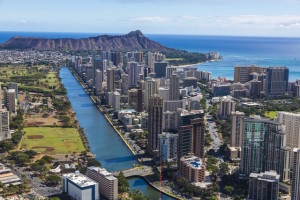
Ala Wai Canal, Honolulu, O‘ahu: The Ala Wai Canal is an human-made waterway in Honolulu which serves as the northern boundary of Waikīkī. Construction to drain the rice paddies and swamps in the area–a key step in the development of Waikīkī as Honolulu’s premier tourist area– was completed during 1921-28. The Canal also serves as a primary drainage corridor for the rivers and streams that run through central and east Honolulu, and empty into the ocean at Ala Wai Boat Harbor. The Canal is listed on the Hawai‘i Register of Historic Places. (Photo by Tor Johnson; courtesy Hawaii Tourism Authority)

Anahulu Stream Bridge, Hale‘iwa, O‘ahu: The Anahulu Stream Bridge, a reinforced concrete bridge designed by engineer Fred Ohrt and architect Guy Rothwell, was built in 1921 to carry Kamehameha Highway over Anahulu Stream, replacing an earlier wooden bridge on the site. It is the most widely photographed landmark in Hale‘iwa and serves as the gateway to the historic town. The bridge’s double rainbow arch is a rare remaining example of a once-common bridge type, one of only two of this style left in Hawai‘i.

Diamond Bakery

Diamond Bakery, Honolulu, O‘ahu: What started off as a dream between friends has grown to become Diamond Bakery, a household name in Hawai‘i. The company was founded in 1921 by three Japanese immigrants, Hidegoro Murai, Kikutaro Hiruya and Natsu Muramoto, who all enjoyed baking and shared a vision to create the perfect Hawaiian-made cracker. They named their bakery Diamond, after the iconic Diamond Head Crater on O‘ahu. Since 1937, Diamond Bakery has produced crackers and cookies that capture the classic flavors and textures of Hawai‘i’s plantation era.
Goodfellows Brothers, Inc., Kīhei, Maui: Founded in Wenatchee, Washington in 1921 by the three Goodfellow brothers Jack, Bert and Jim Sr., Goodfellow Brothers is a fourth-generation, family-owned large heavy-civil contractor. With more than 1,000 employees and 12 offices in Washington, Oregon, California, and Hawai‘i, undertakings span a wide range of diverse and complex heavy-civil construction projects from high-tech campuses in Silicon Valley and master-planned communities to wind farms, entertainment arenas and environmental restoration projects. (Image left, Maui team at a safety meeting and right, at the Kihei High School construction site; both courtesy Goodfellow Bros.)
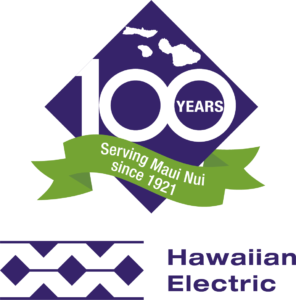 Hawaiian Electric Maui, Kahului, Maui: In 1911, Island Investment Company formed the Island Electric Company to provide Wailuku town with electricity. The company folded in 1919 and Maui Electric Company, Ltd. was established in 1921. Between1964 and 1989 Maui Electric merged with Hāna Light & Power and took over Lahaina Light & Power from Pioneer Mill, making it an island-wide utility. The company then joined Hawaiian Electric Company and acquired Lāna‘i City Power and Moloka‘i Electric Company. In 2006, Kaheawa Wind Partners’ 30-megawatt wind farm on Maui became Hawai‘i’s largest wind farm to date. In 2009, Maui Electric began providing Lāna‘i residents with energy from La Ola Solar Farm, the largest single-site solar farm in Hawai‘i.
Hawaiian Electric Maui, Kahului, Maui: In 1911, Island Investment Company formed the Island Electric Company to provide Wailuku town with electricity. The company folded in 1919 and Maui Electric Company, Ltd. was established in 1921. Between1964 and 1989 Maui Electric merged with Hāna Light & Power and took over Lahaina Light & Power from Pioneer Mill, making it an island-wide utility. The company then joined Hawaiian Electric Company and acquired Lāna‘i City Power and Moloka‘i Electric Company. In 2006, Kaheawa Wind Partners’ 30-megawatt wind farm on Maui became Hawai‘i’s largest wind farm to date. In 2009, Maui Electric began providing Lāna‘i residents with energy from La Ola Solar Farm, the largest single-site solar farm in Hawai‘i.
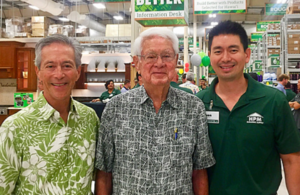 HPM Building Supply, Kea‘au, Hawai‘i Island: In 1921, Japanese carpenter Kametaro Fujimoto founded Hawai‘i Planing Mill in the town of Hilo on Hawai‘i Island. Despite earlier setbacks such as damage to the Hilo facility in both the 1946 and 1960 tsunamis, the small lumber mill eventually grew into a statewide building partner and a fifth-generation legacy business with hundreds of employees. Anchored with the core values of heart, character and growth, HPM was one of Hawai‘i’s first companies to establish an employee profit-sharing plan and its 100% employee-owned stock ownership plan allows employees to participate in and benefit from HPM’s continued success and expansion. (Image of three generations of HPM leadership, courtesy HPM Building Supply)
HPM Building Supply, Kea‘au, Hawai‘i Island: In 1921, Japanese carpenter Kametaro Fujimoto founded Hawai‘i Planing Mill in the town of Hilo on Hawai‘i Island. Despite earlier setbacks such as damage to the Hilo facility in both the 1946 and 1960 tsunamis, the small lumber mill eventually grew into a statewide building partner and a fifth-generation legacy business with hundreds of employees. Anchored with the core values of heart, character and growth, HPM was one of Hawai‘i’s first companies to establish an employee profit-sharing plan and its 100% employee-owned stock ownership plan allows employees to participate in and benefit from HPM’s continued success and expansion. (Image of three generations of HPM leadership, courtesy HPM Building Supply)
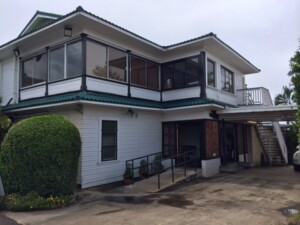 Natsunoya Tea House, Honolulu, O‘ahu: In 1921, Shuichi and Taneyo Fujiwara opened Shunchoro Tea House. Shuichi, who had lost a restaurant to the 1906 San Francisco earthquake and was on his was back to Japan when he stopped in Honolulu, fell in love with Hawai‘i and purchased the ‘Ālewa Heights property where Natsunoya Tea House stands today. He did much of the construction himself, including the house, utility lines and access road. The Fujiwara’s son Laurence, Sr., developed his own tea house on School Street and named it Natsunoya, but after Shuichi’s death Laurence took over management of his parents’ larger establishment in ‘Ālewa Heights and renamed it Natsunoya. The Fujiwaras now welcome mostly local customers to the only remaining tea house on O’ahu where the authentic atmosphere and fare live on.
Natsunoya Tea House, Honolulu, O‘ahu: In 1921, Shuichi and Taneyo Fujiwara opened Shunchoro Tea House. Shuichi, who had lost a restaurant to the 1906 San Francisco earthquake and was on his was back to Japan when he stopped in Honolulu, fell in love with Hawai‘i and purchased the ‘Ālewa Heights property where Natsunoya Tea House stands today. He did much of the construction himself, including the house, utility lines and access road. The Fujiwara’s son Laurence, Sr., developed his own tea house on School Street and named it Natsunoya, but after Shuichi’s death Laurence took over management of his parents’ larger establishment in ‘Ālewa Heights and renamed it Natsunoya. The Fujiwaras now welcome mostly local customers to the only remaining tea house on O’ahu where the authentic atmosphere and fare live on.
 Nisshodo Candy Store, Honolulu, O‘ahu: This small mochi shop in a Kalihi warehouse has crafted its locally famous Japanese confections since the 1920s. Asataro Hirao left Hiroshima, Japan to work in Hawai‘i at the sugar plantations. On a subsequent visit to his hometown, Asataro learned how to make chichi dango (a soft, sweet confection of Japanese origin made of mochiko, sweet rice flour) from a confectionary maker. Today, great-grandson Michael Hirao continues the business, maintaining his family’s traditional recipes while adding some new ones, like peanut butter mochi. Second generation owner Richard Hirao believed that the Nisshodo name is a metaphor for “the sun never setting on the business.”
Nisshodo Candy Store, Honolulu, O‘ahu: This small mochi shop in a Kalihi warehouse has crafted its locally famous Japanese confections since the 1920s. Asataro Hirao left Hiroshima, Japan to work in Hawai‘i at the sugar plantations. On a subsequent visit to his hometown, Asataro learned how to make chichi dango (a soft, sweet confection of Japanese origin made of mochiko, sweet rice flour) from a confectionary maker. Today, great-grandson Michael Hirao continues the business, maintaining his family’s traditional recipes while adding some new ones, like peanut butter mochi. Second generation owner Richard Hirao believed that the Nisshodo name is a metaphor for “the sun never setting on the business.”
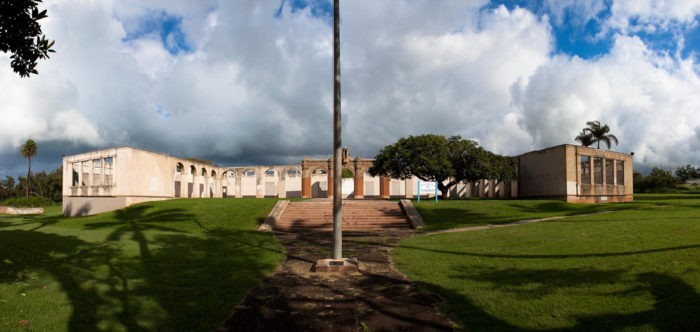
Old Maui High School Administration Building, Paia, Maui: The administration building is a single-story, reinforced-concrete structure with a U-shaped layout, built in the Spanish Mission Revival style. It was designed by Charles W. Dickey, who was raised in Haiku and would go on to become a prominent local architect credited for creating a distinctive Hawaiian style of architecture. The building opened with great ceremony in December 1921, and became the school’s emblem, its broad front steps the favored place for yearbook pictures. A long list of notable alumni include Hawai‘i Congresswoman Patsy T. Mink who graduated in 1944. In 1972, due to shifting demographics, Maui High was relocated to Kahului. The Friends of Old Maui High work to preserve the Administration Building and find a new use for the old campus.
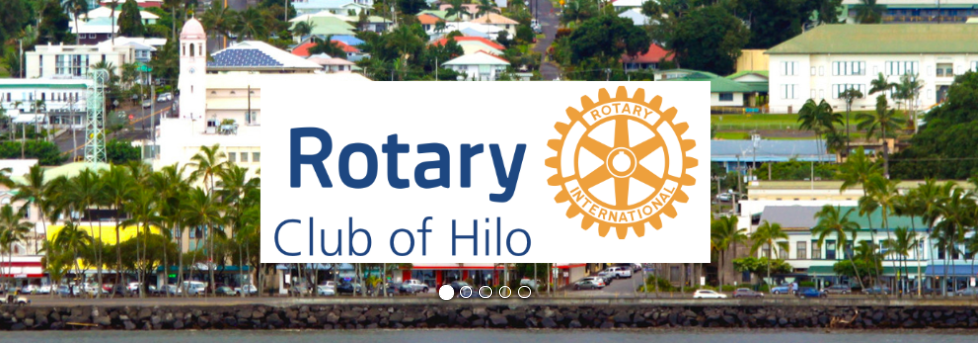
Rotary Club of Hilo, Hilo, Hawai‘i Island: Over the past century the Rotary Club of Hilo, the second club established in the Territory of Hawai‘i, has been a vital part of the Hilo community. The club brings together a diverse group of business, community and civic leaders doing great work for local and global communities and having a great time doing it. Current President Nancy Cabral, who was also the first female member of the club in 1988, says, “Rotary’s vision statement, ‘Together, we see a world where people unite and take action to create lasting change — across the globe, in our communities, and in ourselves,’ is truly reflected in our club’s membership.” A few notable projects range from fostering Japan’s reentry to Rotary in 1949 to participating in the reforestation of native Koa forest on Mauna Kea in 1997 and providing twice weekly home-cooked meals for Hawaiʻi Island Home for Recovery during COVID.
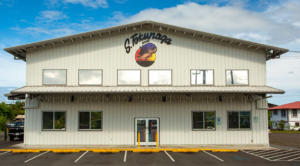 Tokunaga Store, Hilo, Hawai‘i Island: S. Tokunaga Store was established in 1920 by Sumie Tokunaga, who emigrated from Japan to Hawai‘i Island to work on the sugar plantation. At age 31, he opened a grocery and tackle shop in downtown Hilo. The tsunamis of 1946 and 1960 destroyed the store at its original bayfront location, but it was relocated and rebuilt several times. Family descendants in the business included Sumie’s daughter-in-law Ethel, followed by his grandson Michael and daughter-in-law Peggy. Under their leadership, the store relocated to a larger space first on Hōkū Street then to Manono Street where the 6,000 square foot store employs 16 and the merchandise includes equipment for diving, hunting and paddleboarding, darts, firearms and more. The Tokunagas maintain a strong sense of history and live by the creed, “Give a man a fish, feed him for the day; teach a man to fish, feed him for a lifetime.”
Tokunaga Store, Hilo, Hawai‘i Island: S. Tokunaga Store was established in 1920 by Sumie Tokunaga, who emigrated from Japan to Hawai‘i Island to work on the sugar plantation. At age 31, he opened a grocery and tackle shop in downtown Hilo. The tsunamis of 1946 and 1960 destroyed the store at its original bayfront location, but it was relocated and rebuilt several times. Family descendants in the business included Sumie’s daughter-in-law Ethel, followed by his grandson Michael and daughter-in-law Peggy. Under their leadership, the store relocated to a larger space first on Hōkū Street then to Manono Street where the 6,000 square foot store employs 16 and the merchandise includes equipment for diving, hunting and paddleboarding, darts, firearms and more. The Tokunagas maintain a strong sense of history and live by the creed, “Give a man a fish, feed him for the day; teach a man to fish, feed him for a lifetime.”
Surf N Sea Building (originally a general store), Hale‘iwa, O‘ahu: Surf N Sea, the oldest surf shop and a Hale‘iwa landmark, is the only business located next to the beach. It has survived tsunamis and high surf since 1921, a testament to its excellent construction. Remnants of the old O‘ahu Railway and Land Company Railroad, which passed by on the ocean side of the building, can still be found. In the early 1930s, W.H. Miura and his family operated the W.H. Miura Dry Goods and Tailor Shop there and lived upstairs. The Ochiai family followed, ran a grocery there store until 1944 and lived upstairs, leaving a light on each night to serve as a lighthouse for the sampans that moored in Anahulu Stream. Additional owners followed with the building housing a sweet shop and general store until the Liskeys opened Surf N Sea in late 1964 and sold hardware, guns, ammunition and dive gear. The shop, now owned and operated by Joe Green and his family, has refocused the business on water sports and is proud to be distinguished as the longest-running surf shop in Hawai‘i.
 Territorial Savings Bank, Honolulu, O‘ahu: Territorial Savings Bank has come a long way from its humble beginnings in 1921 when 10 individuals came together to establish the Kaimukī Building & Loan Association. Committed to providing personal financial services to their customers and keeping in step with community needs, Territorial Savings Bank has grown to hold approximately $2.0 billion in assets and operate 29 branches on the islands of O‘ahu, Maui, Kaua‘i and Hawai‘i.
Territorial Savings Bank, Honolulu, O‘ahu: Territorial Savings Bank has come a long way from its humble beginnings in 1921 when 10 individuals came together to establish the Kaimukī Building & Loan Association. Committed to providing personal financial services to their customers and keeping in step with community needs, Territorial Savings Bank has grown to hold approximately $2.0 billion in assets and operate 29 branches on the islands of O‘ahu, Maui, Kaua‘i and Hawai‘i.
- To learn more about the 2021 Preservation Honor Awards, please visit: https://historichawaii.org/awards-2021-2-2-3


